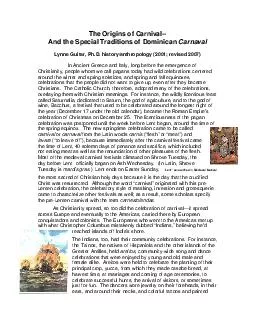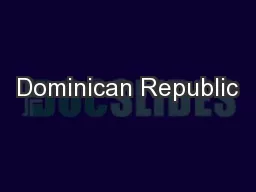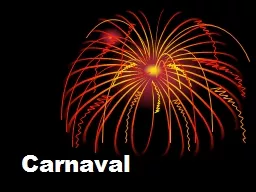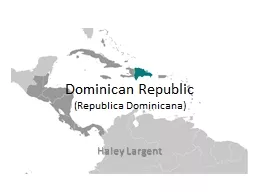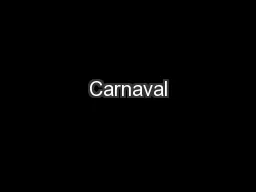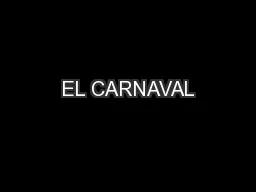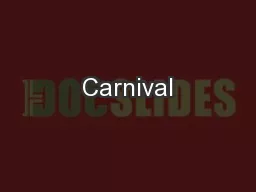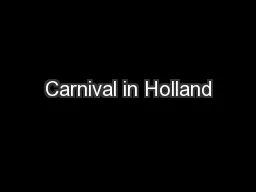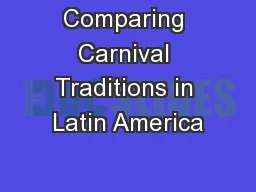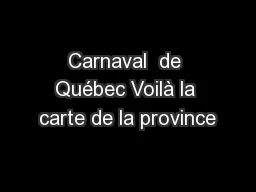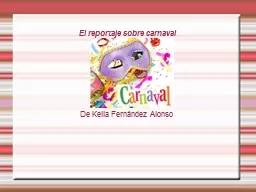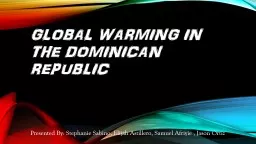PDF-The Origins of Carnival And the Special Traditions of Dominican Carnaval nne Guitar Ph
Author : trish-goza | Published Date : 2014-11-20
D histor an thropolog y 2001 revised 2007 In Ancient Greece and Italy long before the emergence of Christianity people whom we call pagans today had wild celebrations
Presentation Embed Code
Download Presentation
Download Presentation The PPT/PDF document "The Origins of Carnival And the Special ..." is the property of its rightful owner. Permission is granted to download and print the materials on this website for personal, non-commercial use only, and to display it on your personal computer provided you do not modify the materials and that you retain all copyright notices contained in the materials. By downloading content from our website, you accept the terms of this agreement.
The Origins of Carnival And the Special Traditions of Dominican Carnaval nne Guitar Ph: Transcript
Download Rules Of Document
"The Origins of Carnival And the Special Traditions of Dominican Carnaval nne Guitar Ph"The content belongs to its owner. You may download and print it for personal use, without modification, and keep all copyright notices. By downloading, you agree to these terms.
Related Documents

